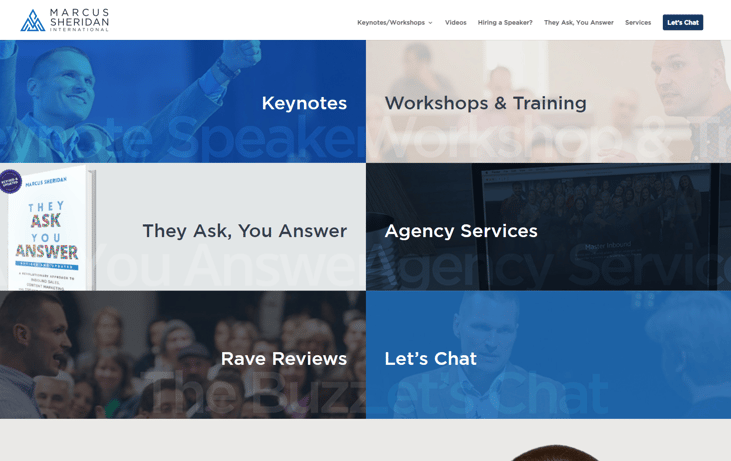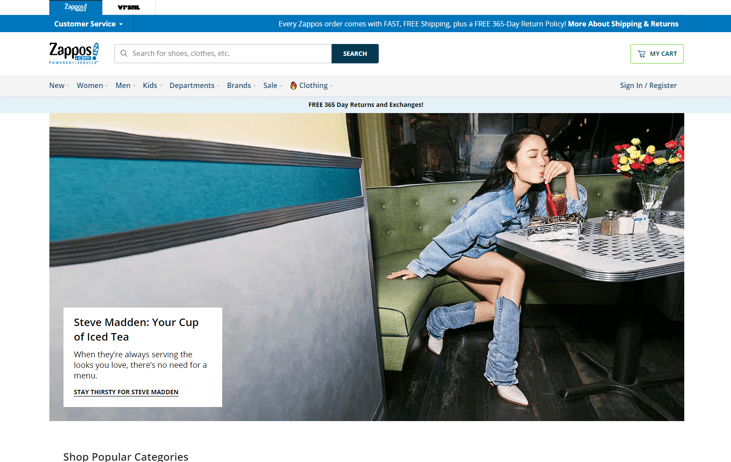An inbound-ready website is a website that is optimized for search engines such as Google, Bing, or Yahoo. These websites attract visitors from major search engines.
Why should you build an inbound-ready website? You want your website to be found by the people who are searching for what you offer. This means that it needs to have the right keywords and content that will make it easy for them to find you. If they can’t easily find your website then they won’t come back. So if you want more traffic coming to your site, you need to optimize it for search engines like Google, Bing, and Yahoo.
An inbound website is carefully planned out to ensure that it ranks well in search engine results. In addition, these sites are designed to be user-friendly and attractive to visitors.
A good website should be able to convert visitors into leads and sales. The key to success is to create a website that is both visually appealing and functional. Your site should also be mobile responsive, meaning that it adapts to fit any device.
|
Inbound Marketing A business methodology that attracts customers by creating valuable content and experiences tailored to them. |
What is Inbound Marketing?
Inbound Marketing is a dynamic buyer-centric solution that focuses on the consumer's needs, desires, and buying journeys. The inbound methodology identifies fitting buyer personas' pain points and aims to deliver a solution through enticing engagement, targeting them at each stage of their buying journey.
Its various steps account for the different stages of a buyer's journey. Through these steps, tailored content is served to buyers, converts them, and delights them throughout their purchasing lifecycle.
What is an Inbound Website?
Inbound marketing is about creating value for buyers through content that matches their stage in the buying cycle. An Inbound website is optimized to generate leads and is the cornerstone of the Inbound Marketing methodology. Visitors will come across relevant content that interests them and convert if they click on it.
What is an Inbound-Ready Website?
An inbound-ready website is a website that is optimized for the success and harnessing of the benefits of inbound marketing. This means that it will help you acquire traffic, generate leads, and create demand when inbound is combined with it.
Fine Media is a digital agency that helps you create your own brand story through storytelling. We help you tell your unique story online. Our team of experts will help you design and launch a website that tells your story, engages visitors, and converts them into customers.
The Marketplace, Websites, and User Behavior Have Changed!
In the past, buying something meant going to a store and asking someone if they had what you were looking for. Today, the internet is the primary source of information when making almost any purchase. Online shopping has become so popular that 63% of shoppers begin their journey by searching for products online.
If you want to succeed in today's competitive marketplace, you need to change your approach. Technology is advancing at an unprecedented rate. Buyers expect more from companies than ever before. And customers' attention spans are shorter than ever. So what does that mean? How do you get ahead? Here's how.
Regardless of the first action you take, everyone is searching for the same thing: an experience they can trust. Every consumer is looking for a company that delivers on its promises, and that won't
try to sell them something they don't need or isn't working. Someone they know will get back to them quickly, and won't leave them hanging when they ask questions. Someone reliable and worth paying for.
When it comes to establishing and reinforcing your website's trustworthiness, there are several ways of doing so. It doesn't involve animated GIFS.
9 Features of a Great Inbound Marketing Website Design
Here I've listed 9 key elements that every great inbound marketing website design should include. They not only help improve your inbound marketing strategy, but they also help you establish trust with potential buyers so that they're comfortable doing business with you.
Here I've shared some important things every great inbound marketing strategy should have. They not only assist your inbound marketing efforts but also help you establish trust among prospective clients which is essential for making them comfortable doing business with you.
1. Customer-focused messaging
When it comes to creating a successful inbound marketing website, customer-focused messaging should be your top priority. Your website should not be about selling your product or service; instead, it should be about providing your customers with the information they need to make informed decisions.
According to a survey conducted by HubSpot, 75% of consumers conduct online research before making a purchase. This means that your website needs to provide the information that potential customers are searching for.
To achieve customer-focused messaging, you need to understand your target audience and their pain points. What are the problems they are trying to solve? What questions do they have? By answering these questions, you can create content that resonates with your audience and builds trust with them.
It's also important to understand why your customers came to you in the first place. Did they see an ad online? Were they referred by someone else? Did they find you while searching for something specific? Understanding the customer journey and what led them to your website can help you tailor your messaging to their specific needs.
To effectively communicate with your audience, it's important to sell your worth and demonstrate the value you bring to the table. This can be done by highlighting the problems you solve and the benefits your customers will receive by doing business with you. For example, if you are a software company, you may highlight how your software can increase productivity or save time for your customers.
Marcus Sheridan, author of "They Ask, You Answer," suggests following a 3-to-1 ratio of customer-focused content to self-promotion. This means mentioning your customers five times more than you mention yourself or your company. By doing this, you can maintain an air of helpfulness and establish trust with your audience.

2. A User-friendly Design
A user-friendly design is crucial for any successful website. Studies have shown that users are likely to abandon a website if they find it difficult to navigate or understand. A survey by Adobe found that 38% of people will stop engaging with a website if the layout is unattractive.
To ensure a user-friendly design, it's important to consider the user experience (UX) and user interface (UI) design. UX design focuses on how users interact with your site, while UI design focuses on how it looks. Your site should be easy to navigate, with clear labels and intuitive menus.
Users should be able to find the information they're looking for quickly and easily.
In addition to clear navigation, your website should also be responsive and optimized for mobile devices. With more and more people accessing the internet on their mobile devices, your site must be accessible on smaller screens.
An example of a user-friendly design is the website of the online retailer Zappos. The site is easy to navigate, with a clear search bar and intuitive menus. The product pages are well-organized, with multiple images and detailed descriptions. The site also features customer reviews, which help to build trust and provide social proof.

3. Optimized Website Speed
Website speed is a critical component of user experience, and it can have a significant impact on your site's success. Users today expect fast load times, and research shows that the average user will only wait three seconds for a page to load before abandoning it.
A study by Google found that as page load time goes from 1 second to 10 seconds, the probability of a user bouncing increases by 123%. This means that if your website takes too long to load, you risk losing potential customers.
But it's not just users who care about website speed. Search engines like Google also consider page load times when ranking websites. In 2018, Google introduced "Speed Update", which makes website speed a ranking factor for mobile searches. This means that if your website is slow to load on mobile devices, your search engine ranking could suffer, resulting in fewer visitors and potential customers.
Several factors can impact the website speed, such as large image files, too many plugins, and unoptimized code. It's essential to regularly monitor your website's speed and take steps to optimize it for fast loading times.
This can include things like compressing image files, minimizing the use of plugins, and cleaning up code. By doing so, you can improve the user experience, boost search engine rankings, and ultimately increase conversions.
In short, website speed is a critical component of user experience and can greatly impact the success of your website. If your website is slow to load, you risk losing potential customers and hurting your search engine ranking.
By taking steps to optimize website speed, you can improve user experience and drive conversions.
4. Valuable Content
One key aspect of valuable content is relevance. You need to create content that is relevant to your audience and their interests. This means understanding your target market, their pain points, and what they're looking for online. By addressing their needs and interests, you can create content that resonates with them and keeps them engaged.
Additionally, valuable content is often shareable. When your content is useful, informative, or entertaining, people are more likely to share it with their friends and followers on social media. This can help increase your brand awareness and drive more traffic to your website.
Furthermore, valuable content can also help establish you as a thought leader in your industry. By providing useful information and insights, you can position yourself as an expert and build trust with your audience. This can lead to more leads and sales over time.
According to a study by HubSpot, companies that blogged 16 or more times per month got almost 3.5 times more traffic than companies that blogged less than 4 times a month. This highlights the importance of creating and publishing valuable content regularly.
Overall, creating valuable content is essential for any successful digital marketing strategy. It can help attract and retain customers, establish thought leadership, and drive more traffic to your website.
5. Multimedia Content
When it comes to content creation, it's essential to consider the different ways your audience prefers to consume information. People have different preferences, and some may prefer reading articles, while others may prefer listening to podcasts or watching videos.
It's important to also consider your audience's learning style, as some may be visual learners while others may need to hear information before understanding it.
Video content has become increasingly important in marketing, with brands investing more time in creating engaging videos that connect with customers.
Research shows that 84% of consumers have reported buying products after viewing a brand's video. Video content can help companies connect with their audience, and 72% of viewers prefer to watch videos about a company rather than read text or articles about them.
Including multimedia content on your website can help you reach your customers through various channels, such as social media, search engine results pages, and emails. Your content can be consumed in different ways, providing an additional layer of access that can include videos on your website, as well as other types of content such as testimonials, employee bios, product or service videos, landing page videos, cost videos, social proof videos, and more.
A healthy content mix includes a range of different media types, ensuring that you reach a broader audience. To this end, it's crucial to have text-based and image-based content on every critical page of your website. With a mix of media types, you can engage your audience in different ways, providing a more comprehensive and satisfying experience.
6. A Source for Premium Content
In content marketing, it's essential to create content that adds value to your target audience. Premium content takes this a step further by providing in-depth, comprehensive information that goes beyond basic knowledge.
Examples of premium content include ebooks, whitepapers, webinars, video series, podcasts, and more.
Premium content is more challenging to create than regular content, but it can yield significant benefits. A study found that 80% of B2B marketers use premium content as a part of their content marketing strategy, and 57% of B2B marketers said that premium content has been their most successful tactic.
By including premium content on your website, you can increase the perceived value of your site and attract more visitors. These types of posts tend to get more traffic and engagement than other types of content, so they can help you build a loyal audience.
For example, if you run a software company, you could create an ebook that explains how to use your product in various scenarios. This type of content would provide your audience with actionable advice that they can implement immediately, making them more likely to choose your product over a competitor's.
Premium content can also help you generate leads. For example, you could offer a whitepaper in exchange for visitors' contact information, allowing you to follow up with them later.
7. A Self-selection Tool
Inbound Marketing is all about creating a positive experience for your customers. You need to create an environment where potential customers feel comfortable enough to share information about what they're looking for.
Once you've got that information, you can then present offers that match those needs. If you're not doing that, you're going to lose a lot of money.
A self-selection tool is an interactive feature that allows users to customize the experience of a website. For example, a self-selection tool could guide users to the information or product they need.
A self-selection tool can also help you understand what kind of person is visiting your site. You can see what pages they visit, what products they click on, and even what questions they ask. Self-selection tools can be very useful when designing websites because they allow you to create a personalized experience for each visitor.
A pricing/cost calculator
These are tools that help you evaluate how much activity, product, or service costs you. They calculate everything from the price of a single email to the total amount spent per month. Pricing calculators are extremely helpful for determining whether or not it's worth investing time and energy into a particular project.
A build/design tool (also called a “finder“)
These are tools that help guide you through the design process. For example, WIX’s Site Builder lets you pick from hundreds of templates, drag and drop elements onto your page, and customize them however you see fit.
A customer onboarding tool helps customers get things set up correctly for them. It does this by asking questions about their needs and preferences and then suggesting relevant products and services. These tools put the power into the hands of the users, freeing up your sales team to focus on the leads that require one-on-one attention.
8. Realtime Conversations
One effective way to do this is by offering live chat, Facebook Messenger, Slack, or other messaging apps. These tools enable visitors to communicate with you in real-time and get answers to their questions promptly.
According to a study by Forrester, live chat interactions result in a 10% increase in average order value.
Live chat and messaging apps can also be used to deliver calls-to-action and provide personalized recommendations. Chatbots are becoming increasingly popular, allowing businesses to provide instant support even outside of regular business hours.
By embracing these newer forms of communication, you can connect with potential buyers and provide them with the convenience they desire.
9. Social Proof
When selling products online, it's essential to provide proof that you can deliver on your promises. Without social proof, potential customers may be hesitant to buy from you. Social proof is a psychological phenomenon where people are more likely to trust and follow the actions of others.
By showcasing social proof on your website, you can help build trust with your audience.
There are various forms of social proof, including customer reviews, case studies, testimonials, and user-generated content. These types of content show real customers using and enjoying your products or services. When others see this, they are more likely to trust your brand and consider making a purchase.
For example, a study by Bright Local found that 91% of 18-34-year-olds trust online reviews as much as personal recommendations. Additionally, displaying customer reviews can increase conversion rates by up to 270%.
One effective way to showcase social proof is to use customer testimonials. These testimonials can include quotes from satisfied customers or even video testimonials. Another way to display social proof is by showing the number of customers who have already purchased your product or service.
Make Great an Inbound Marketing-Ready Website
You may not think about it, but every time you search for something online, you're looking for certain elements. You're looking for reviews, ratings, price, availability, and other factors that will help you determine if you should buy something or not.
If you were to buy something, you'd also want to see what others thought about the product before buying it. All of these elements play a role in your decision-making process, and all of them are important to consider when creating an inbound marketing strategy.
It's time to change your approach to your website. When it comes to choosing which pages to include, how they're structured, what they say, and how they look, objectivity trumps subjectivity. Start with fewer elements than you think you need.
If you're starting from scratch and you want to get something done quickly, then focus first on doing just one thing at a time instead of trying to do everything at once.



